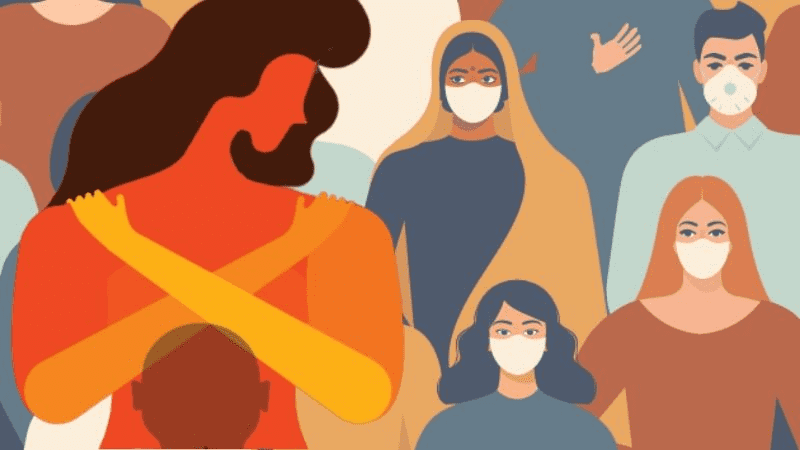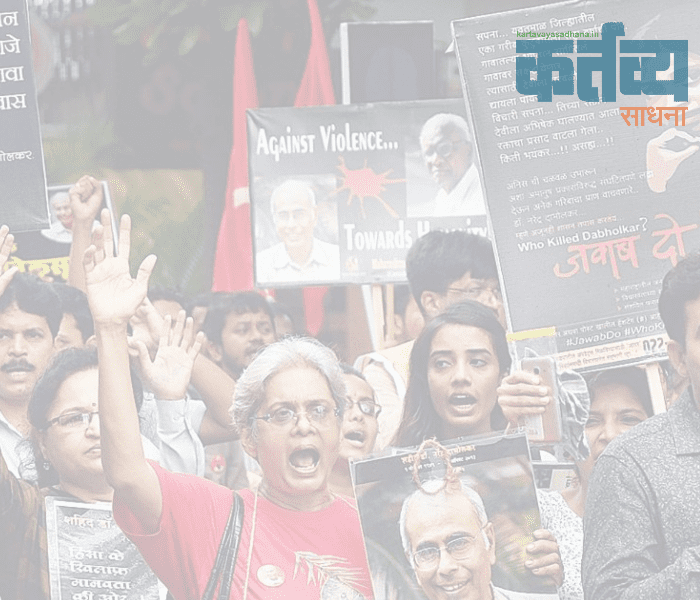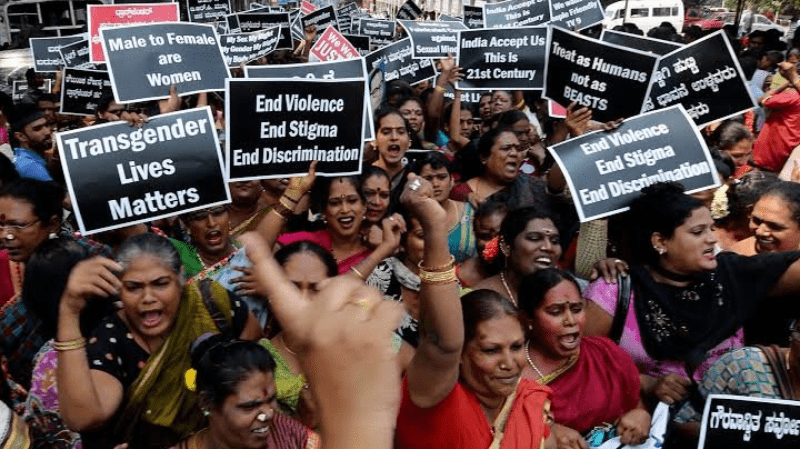In this two-part article Justice (Retd.) S. C. Dharmadhikari, High Court of Bombay, talks about the role of courts during the Pandemic situation. The article draws a line between the right of a person to move to the courts versus the limitations faced by the courts that is to what extent they can interfere in a matter before it. We can't ignore the division of power (Legislation, executive and judiciary) provided by the Indian Constitution. The judiciary can't work only on the sympathetic ground even in a Pandemic situation like COVID 19 otherwise there are chances of grave injustice. This is Part 2 of the article. Click here to read Part 1.
Leaving aside the controversy as to whether Covid 19 is an infectious or contagious disease, undisputedly, it has extended from one State to another and probably covered the whole country. In total disregard to the Constitutional framework, people are rushing to the Supreme Court and requesting it to direct the Central Government to provide or arrange for hospitals with dedicated Covid wards and beds and emergent health care facilities. This is essentially a State subject. If that is left for the High Court to deal with and consider, with respect, there would be less confusion. It is a matter of concern of the High Courts of the affected States. As far as the centre is concerned, it can enter the legislative arena by virtue of Entry 29 of the Concurrent List.
In fact, we are awfully short of a proper and adequate legislative framework. We are left with the Epidemic Act, 1897 and no other legislation. Even this old law has not been amended to deal with matters of far-reaching consequences, particularly a health crisis. The amendment made in 2020 to this law is only to protect and safeguard the interests of the frontline health workers popularly called “Covid Warriors”.
The Act only contains one section to enable the State Government to make regulations and to take such temporary measures as are permitted in Section 2 of the Epidemic Diseases Act, 1897. That is also after recording that existing laws are insufficient to deal with the crisis and post epidemic consequences. Even if the word ‘regulation’ is construed in the widest possible manner to include the power to enact prohibitory measures, still in none of the High Courts the respective State Governments have placed on record all the regulations traceable to this section. In fact, most of the State Governments are not even aware of the existence of such power vested in them.
The State Governments and equally the Central Government is proceeding on the footing that the Epidemic Diseases Act, 1897 is not enough to manage and control the present situation. They have been informed that this Pre-Independence legislation will have to be supplemented by Post Independence and Constitutional era legislation like the Disaster Management Act, 2005 for short D.M. Act. Therefore, with the assistance of these two laws, the steps and measures necessary to control the pandemic and deal with the inadequacies and shortages can be taken. That is the prevalent legal understanding.
Even this legislation has not been scanned carefully. It is the responsibility of the Law and Judiciary Departments and the Legislative Wing of the State Legislatures to bring to the notice of the executive functionaries, the aim and object of this legislation. This law was essentially enacted to deal with natural, man-made calamities and catastrophes termed as disasters. Storm, Avalanches, Landslides, Cyclone, Earthquake, floods and accidents are the focal point of this legislation.
Similarly, man-made disasters like Fires, the collapse of buildings, etc. are managed with the aid of this law. Therefore, the word ‘disaster’ is defined accordingly. Even if a broad meaning is assigned to this word to include an epidemic, the Central Government is not the sole Authority. It has been assigned a planning and monitoring role. It makes a national plan for the prevention and mitigation of disasters. Thus, the national plan shall include measures to be taken for the prevention of disasters or the mitigations of their effects, measures to be taken for the integration of the mitigation measures in the development plans, measures to be taken for preparedness and capacity building to effectively respond to any threatening disaster situations or disaster.
Thus, there is a National Disaster Management Authority chaired by the Prime Minister. Section 6 of the Disaster Management Act, 2005 deals with powers and functions of the national authority and it is essentially of laying down policy on disaster management and approving the national plan. However, the law envisages the establishment of a national executive committee. Thus, it separates the political heads and executive functionaries and endows the latter with distinct powers and responsibilities. Hence, there is a national authority and a national executive authority. Similar is the position of the State Authority and State Executive Authority.
One interesting feature of this law and particularly in the case of Delhi is that under section 14, every State Government is obliged to establish a State Disaster Management Authority. That is headed by the Chief Minister of the State who shall be its chairperson. The maximum number of members in the State Authority are eight and they are to be nominated by the Chairperson. The Chairperson of the State Executive Committee is also the ex-officio member of the State Disaster Management Authority. However, Section 14(4) carves out an exception. Ordinarily, the chairperson of the State Executive Committee is the Chief Executive Officer of the State. However, in the case of a Union Territory having a legislative assembly, except the Union Territory of Delhi, the Chief Minister shall be the chairperson of the authority established under Section 14.
In the case of Union Territory having no legislative assembly, the lieutenant governor and the administrator shall be the chairperson of that authority. The second proviso appearing before section 14(4) says that the Lieutenant Governor of the Union Territory of Delhi shall be the chairperson of the State Disaster Management Authority and the Chief Minister thereof shall be the vice-chairperson of the State Authority. Then follow the provisions enabling the constitution of advisory committees. Even if overall power vests in the Governments, the Act decentralises it. The concerned Government can be pulled up by the Court but the peculiar situation in the case of Delhi has gone unnoticed. There, nobody has been questioning the Lieutenant Governor particularly after he has been explicitly made virtually the sole functionary or the top most executive of the State by parliamentary legislation recently enacted.
There is bound to be confusion in case of conflict between elected members and the lieutenant governor. The chaotic situation in Delhi may be arising also because of frequent differences of opinion, lack of consensus and agreement between the elected representatives and the central government appointed lieutenant governor. That apart, the DM Act creates authority and executive committee, advisory and subcommittees at the State and District Level.
Thus, Macro and Micromanagement of the disaster is contemplated in this legislation. The power exclusively vesting in the authorities created and established by this law cannot be usurped even by the Government. In a health crisis like Covid-19, the Chief Minister of the State does not act singly. He is a part of a collective decision-making body.
Assuming that in emergencies he can take decisions which will bind the Disaster Management Authority, still his decision needs to be ratified or approved post facto by appropriate Executive Authorities. Pertinently, the executive power of the state vests in the Governor who exercises it with the aid of Secretaries of respective Departments. Rules are required to be made to give effect to the D.M. Act itself. Therefore, with the main legislation, subordinate legislation is mandated for the enactment to be consistent and complete.
The DM Act abhors the concentration of powers in the Central Government. Timely consultations, personal interactions, visits and inspections to gain complete information and knowledge of local conditions in every state and District is the mandate, else the law will be meaningless. When powers are conferred in an authority, but with their exercise being subject to the parent legislation, one cannot brush aside the relevant provisions. The court will not be in a position to displace much less overthrow Disaster Management Authorities.
The Court cannot override its powers and assume the jurisdiction to implement and enforce the DM Act or the measures to be taken thereunder. The court must direct enforcement and implementation of the DM Act and the measures outlined in the National, State and District Plans through the legislative mechanism. It can at best ensure that the concerned authorities enforce the preventive and mitigating measures contained in the National and State Plans effectively. No takeover, no displacement, no overthrowing in the least, is possible.
Therefore, it will be hazardous to overlook the constitutional and legal framework, the laws made, which are subject to the Constitution, and the contours of the fundamental rights guaranteed to the citizens. Article 19 of the constitution sets out the right to freedoms of speech and expression, assemble peaceably and without arms, to form associations or unions or co-operative Societies, to move freely throughout the territory of India and to reside and settle in any part of the territory of India or to practice any profession or to carry on any occupation or trade or business.
The laws made by the parliament like the Epidemic Diseases Act and the DM Act, 2005 can only place reasonable restrictions on the exercise of these freedoms. The Parliament has purposely employed the words “reasonable restrictions”. Therefore, while curtailing the freedoms or regulating them so as to effectively and properly deal with the epidemic and health disaster, only reasonable restrictions can be placed on their exercise. Whether the restrictions placed are reasonable or not can be decided only by the courts and that too in matters of individual infractions or overreach. We have to be mindful of the existence of these rights to freedoms and the manner of availing of them.
Equally, one has to be aware of the constitutional model, under which the relations between the Union and the States are regulated and controlled. One of the ways in which these relations are guided is by distributing legislative powers and also outlining administrative relations. The constitution establishes coordination and co-operative mechanism. Therefore, the DM Act may allow measures to be taken so as to prevent the disease from spreading further.
Still, the functionaries under the DM Act, 2005 cannot be oblivious of the existence of our Constitution and other laws. They have to take note not only of the laws dealing with public health and hospitals and dispensaries but also the Constitutional guarantees and then decide upon the safety and preventive measures. They may resort to penal laws but without affecting the Citizen’s Constitutional rights. No closure, even partially, of the establishments like Shops, Offices in cities can be ordered contrary to the above. No Restrictions falling foul of the Citizens Right to freedoms and the Constitutional safeguard of his life and protection of his liberty.
To elaborate on this point, one can cite a law made in Maharashtra – the Maharashtra Nursing Homes Registration Act, 1949. It is an act to provide for the legislation and inspection of the nursing homes in Maharashtra. Surprisingly, we are not aware of the subtle but important distinction, that law makes between a nursing home which can include a maternity home, a surgical home but not necessarily a full-fledged hospital.
People rushing to the Court may not be aware of this difference and distinction in law but the Court certainly has to be and equally so must the executive. One cannot mandate every nursing home and maternity home to create covid beds or provide beds to treat persons tested covid positive. The facilities available ought to be borne in mind. A nursing home may not have separate access. A nursing and maternity home may be located in a residential building. In such a situation to direct admission of covid patients in nursing homes or maternity or surgical homes located in residential buildings or congested areas would invite a disaster.
Today, in cities like Mumbai, there is a large scale conversion of even nursing homes into dedicated covid hospitals unmindful of the grave and serious concerns of fire safety and fire prevention measures. An ICU in a surgical home may not be adequate and is not comparable with ICUs in an 800-1000 bed hospital. Similarly, all beds in nursing homes may not be oxygen beds. Still forcing the nursing homes and private health care establishments to admit covid patients by invoking the powers conferred and vesting in the authorities by virtue of the Epidemic Diseases Act and DM Act has invited disastrous consequences.
The State and Police Machinery is already having to attend to frequent power shortages, fires by short circuit or other mishaps on account of the mingling of covid facilities with others. Non-Covid patients are suffering because neither hospitals nor nursing homes are available for their treatment. Out-patient departments are closed. Consultants have stopped attending to them because they are devoting their time exclusively to diagnose and treat Covid patients. In the garb of powers conferred by the Epidemic Diseases Act, the DM Act 2005, and subordinate legislation thereunder, private hospitals are mandated to admit covid patients.
In fact, the executive machinery took a decision and declared a private hospital and establishment like Jaslok Hospital in Mumbai at Peddar road, as a dedicated covid hospital. After realising that this would be overstepping and acting beyond the powers conferred in them, promptly, the decision was varied. Thereafter this hospital was directed to reserve a certain percentage of beds for treating covid patients. This may be permissible but the authorities did not take into consideration the ground realities and on-field difficulties.
In the intensive care units, cardiac care units, neuro care units, pediatric care units, there are equally serious patients requiring emergent medical treatment and care. They would also require oxygen and ventilators. Such cylinders and ventilators cannot be withdrawn and deployed for treating covid patients brought day in and day out. This is certainly not efficient Management of health disasters.
Equally, while dealing with the crisis of alleged shortage of medicines like Remdesivir, the Court cannot be persuaded to ignore the Drugs and Cosmetics Act, 1940. This law defines the term ‘drug’ inclusively. It may include medicines for internal or external use of human beings and substances intended to be used for or in the diagnosis, treatment, mitigation or prevention of any disease or disorder in human beings.
Under Sections 26-A and new 26-B, it is only when the Central Government is satisfied that a drug is essential to meet the requirements of an emergency arising due to epidemic or natural calamities and that in the public interest, it is necessary or expedient so to do, that it has the discretion to issue a notification to regulate or restrict the manufacture, sale or distribution of such drug.
The litigating parties or members of the public may want the court to exercise such power but it is in law, exclusively vesting in the Central Government. At best, as regards Remdesivir, the Courts can direct the Central government to consider issuing a notification in terms of Section 26-B of this Act. None can ignore this statutory prescription and certainly, the courts cannot travel beyond it even if the dug is an essential commodity and an order is promulgated under the Essential Commodities Act, 1955 to meet with an emergent situation.
Even under that Act, it is only the specified authority, which can exercise the powers and perform the functions thereunder. The Central Government may direct imposition of duties on State Government and confer powers in that behalf, but not all powers can be exercised by the State Government on its own. The delegation in terms of Section 5 of this Act allows the State Government to make orders or issue notifications under Section 3 thereof. However, this is a conditional exercise of power. To my mind, even if there is a PIL or a Suo moto action in which the Court is exercising its jurisdiction, given these central laws, any direction or order of the court has to be in consonance therewith.
To sum up, Courts cannot remove shortages of beds or medicines and drugs by their orders and directions. Direction cannot be inconsistent with the legislation. In the matter of shortage of medical oxygen too we are going overboard. We are requesting the courts to make available medical oxygen unmindful of the Explosives Act, 1884 and the Gas Cylinder Rules 2016 issued thereunder. It is the Department of Explosives which is now known as the Petroleum and Explosives Safety Organisation setup by the Government of India which is conferred with the power to prescribe standards and lay down procedures for conversion of industrial oxygen cylinders and inert gas cylinders (nitrogen, argon and helium only) to medical oxygen cylinders. It has issued a circular way back on 22nd April 2020, but this circular itself refers to the Gas Cylinder Rules 2016. The Circular says that in conformity with these rules the conversion from Industrial and Inert gas cylinders to medical oxygen cylinders can take place.
The Gas Cylinder Rules 2016 are not restricted in their operation, only to the size and magnitude of cylinders but to all aspects of conversion, management and transport, storage and distribution. Therefore, oxygen cylinders can carry medical oxygen provided it is manufactured at Licensed locations, factories and establishments. Even the conversion has to take place in the terms of the license. Thereafter, filling in cylinders of the required height and measurement is permitted. In such matters, safety is the prime concern. Therefore, special cylinders meeting the requirement of the rules alone can fill this oxygen post-conversion.
For medical oxygen to be transported too there are separate and dedicated carriers and vehicles. Even if these vehicles are mounted on rail wagons, safe transport must be assured. Cylinders filled with medical oxygen cannot be transported by Air. After the oxygen is transported and carried to the destination, still its storage is a vital matter. Not every establishment and much less a small nursing home will have the oxygen storage plant of the required specification. Therefore, storage of oxygen in order to prevent leakage and pilferage is paramount. It is only after full compliance that the medical oxygen can be administered to the patient who is requiring it.
The requirement of medical oxygen is to be decided by the treating surgeon and consultant. Loose carriage of cylinders and administration without medical supervision cannot be permitted even by the Courts. In such circumstances, it is only for the competent legislature and not the Courts to consider whether the existing laws are adequate to meet and manage the health crisis of the magnitude of covid 19. In our enthusiasm to make all constitutional courts supreme and powerful, we cannot affect a reversal of roles.
The perception all around is that last year, the top Court failed us. The Supreme Court readily accepted the stand of the Executive on “migrant labour” and did not effectively pursue the cause. A repetition of the same in another direction ought to be avoided at all costs by the sensible approach of the legal fraternity.
- Justice (Retd.) S. C. Dharmadhikari
High Court of Bombay.
ranjandharmadhikari132@gmail.com
Click here to read Part 1 of the article.
Tags: Law Court S C Dharmadhikari Corona Judiciary Pandemic Load More Tags

































Add Comment